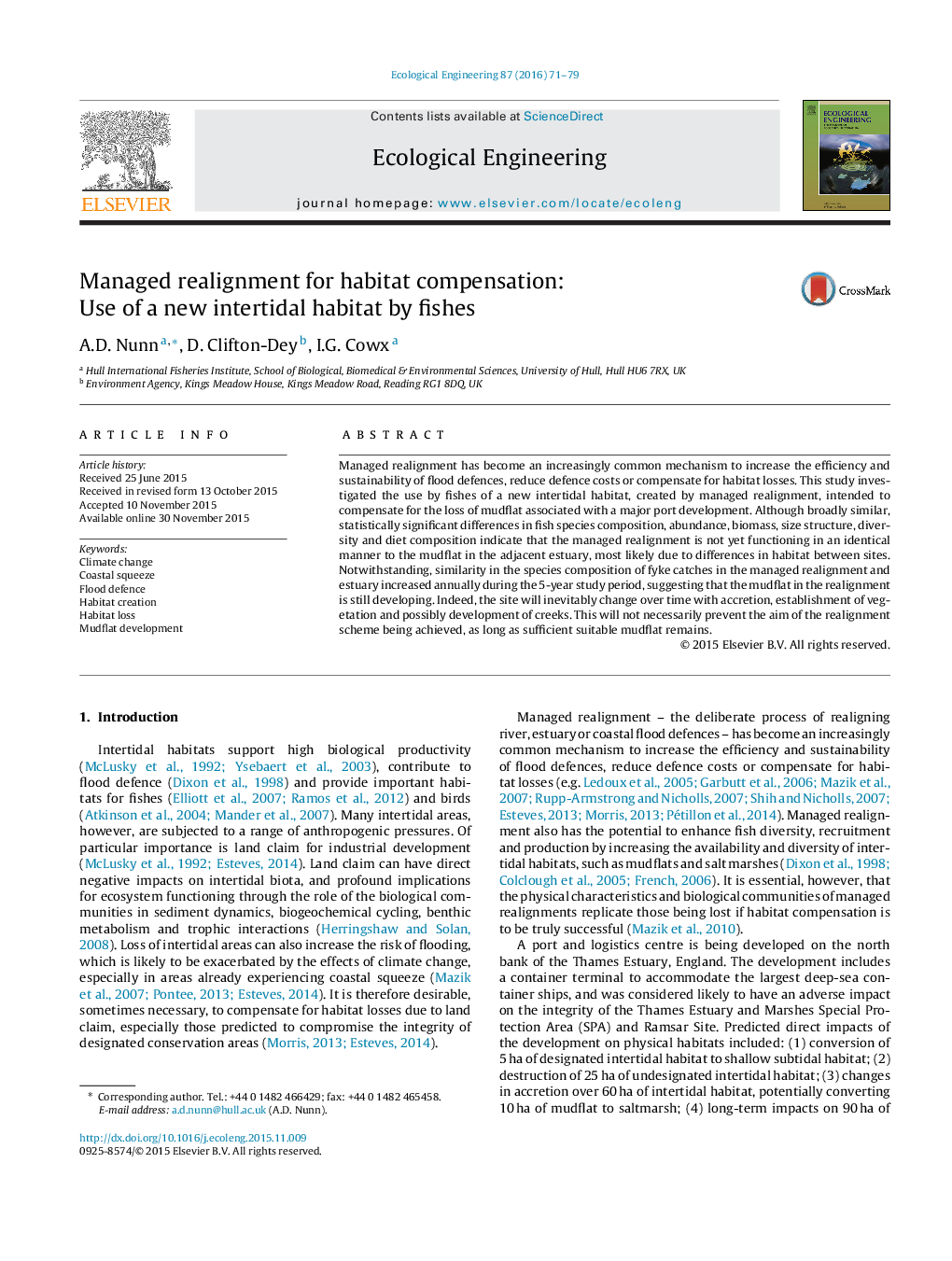| Article ID | Journal | Published Year | Pages | File Type |
|---|---|---|---|---|
| 6301444 | Ecological Engineering | 2016 | 9 Pages |
Abstract
Managed realignment has become an increasingly common mechanism to increase the efficiency and sustainability of flood defences, reduce defence costs or compensate for habitat losses. This study investigated the use by fishes of a new intertidal habitat, created by managed realignment, intended to compensate for the loss of mudflat associated with a major port development. Although broadly similar, statistically significant differences in fish species composition, abundance, biomass, size structure, diversity and diet composition indicate that the managed realignment is not yet functioning in an identical manner to the mudflat in the adjacent estuary, most likely due to differences in habitat between sites. Notwithstanding, similarity in the species composition of fyke catches in the managed realignment and estuary increased annually during the 5-year study period, suggesting that the mudflat in the realignment is still developing. Indeed, the site will inevitably change over time with accretion, establishment of vegetation and possibly development of creeks. This will not necessarily prevent the aim of the realignment scheme being achieved, as long as sufficient suitable mudflat remains.
Related Topics
Life Sciences
Agricultural and Biological Sciences
Ecology, Evolution, Behavior and Systematics
Authors
A.D. Nunn, D. Clifton-Dey, I.G. Cowx,
